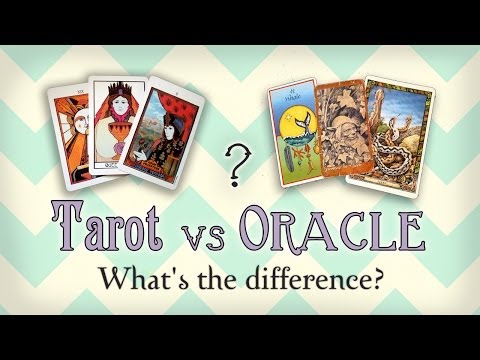
**Tarot vs Oracle: What is the Difference?**
In the realm of divination tools, two popular methods stand out for their unique ways of offering insight and reflection: Tarot and Oracle cards. While they might seem similar at first glance, both serving as guides through the use of evocative images and symbols on cards, they possess distinctive characteristics and uses that cater to different aspects of spiritual inquiry. Understanding these differences can help enthusiasts choose which path might resonate more deeply with their personal journey.
### Historical Roots and Structure
**Tarot Cards:**
The Tarot deck has deep historical roots, tracing back to 15th century Europe where it was initially used for playing games. It wasn’t until the late 18th century that Tarot cards began to be seen as a tool for divination. A traditional Tarot deck comprises 78 cards divided into two main sections: the Major Arcana (22 cards) and the Minor Arcana (56 cards). The Major Arcana features archetypal images representing significant life themes and lessons, such as The Fool, The Lovers, or Death. The Minor Arcana is further divided into four suits (usually cups, pentacles, swords, and wands), each connected to aspects of human experience like emotions, material matters, intellect, and creativity.
**Oracle Cards:**
Unlike Tarot, Oracle card decks do not follow a fixed structure. They can vary widely in number—ranging from less than 20 to more than 100 cards—and do not adhere to a specific system of suits or archetypes. Each deck is often themed and created according to the author’s vision or the tradition it derives from. This could range from angelic guidance to animal spirits or even mythological motifs. This flexibility allows Oracle decks to be highly personalized and direct in their messages.
### Purpose and Usage
**Tarot Cards:**
Tarot is often used for comprehensive readings about complex situations that involve examining past influences, current circumstances, hidden obstacles, and potential outcomes. The elaborate structure of the deck encourages detailed analyses that touch upon various facets of life through symbolic storytelling. Through spreads like the Celtic Cross or Three-Card Spread, tarot readers aim to interpret patterns based on both traditional meanings associated with the cards and intuitive insights.
**Oracle Cards:**
Oracle decks are generally considered more accessible for beginners or those seeking straightforward guidance due to their simplicity and directness. Often used for daily inspiration or affirming messages, Oracle readings usually involve drawing a single card or a few cards as reflective prompts rather than intricate spreads. Because of their diverse themes and less rigid framework, they allow users more freedom in interpreting messages based largely on personal intuition.
### Learning Curve
**Tarot Cards:**
Learning Tarot can be challenging due to its complex system; mastery requires an understanding of symbolic meanings across both major and minor arcana as well as a grasp of numerology, elemental associations (like earth or air), symbolism (e.g., colors), historical context—all woven together into coherent interpretations during readings.
**Oracle Cards:**
In contrast with Tarot’s steep learning curve—where each card has multiple layers of meaning according to its position within a spread—Oracle cards tend towards simpler meanings that are often written directly on the card itself. This ease makes them particularly appealing for those new to card divination who might feel overwhelmed by tarots’ intricacies.
### Conclusion
Both Tarot and Oracle cards offer valuable pathways for self-discovery through reflection on personal circumstances; however choosing between them depends largely on what one hopes to achieve from a reading—is it detailed guidance through complex situations or quick insights for daily motivation? Ultimately either tool can be effective depending entirely upon how individual users connect with them spiritually; mastering one—or both—can provide enriching perspectives on life’s challenges while fostering deeper understanding within oneself.
Tarot Reseñas de Jesús: ¿Quién es y por qué es tu mejor opción?
